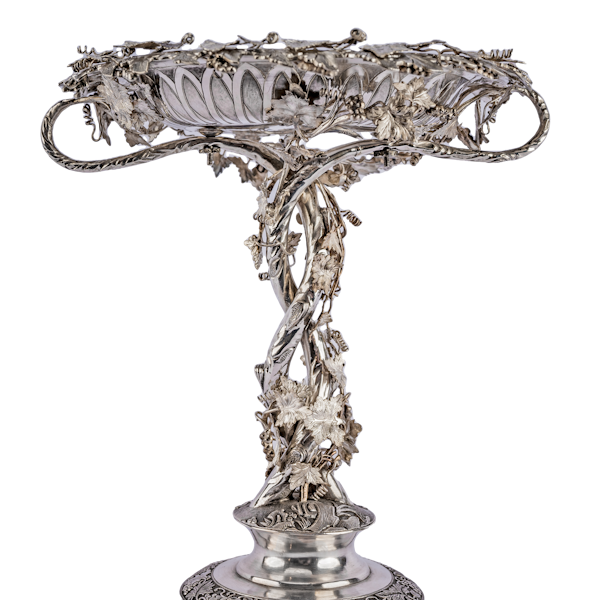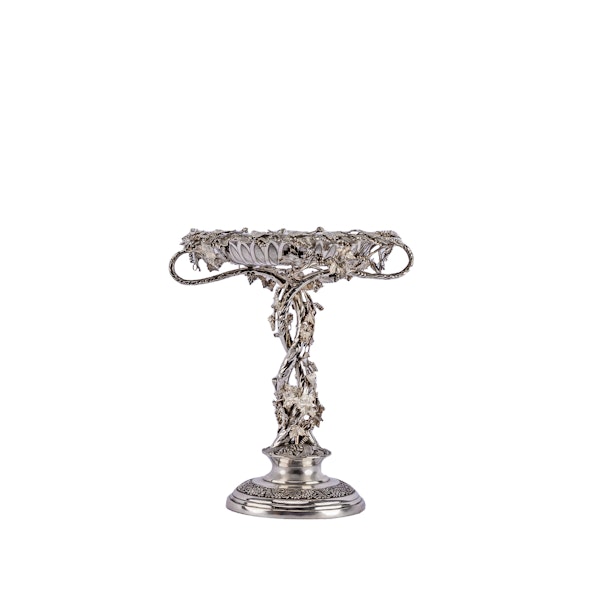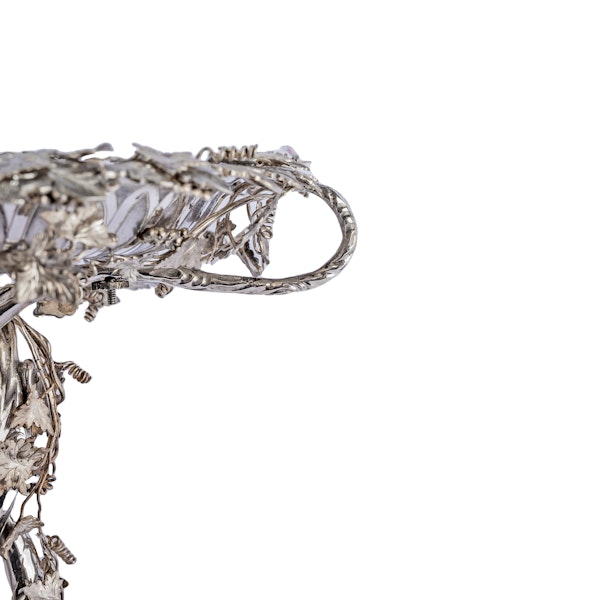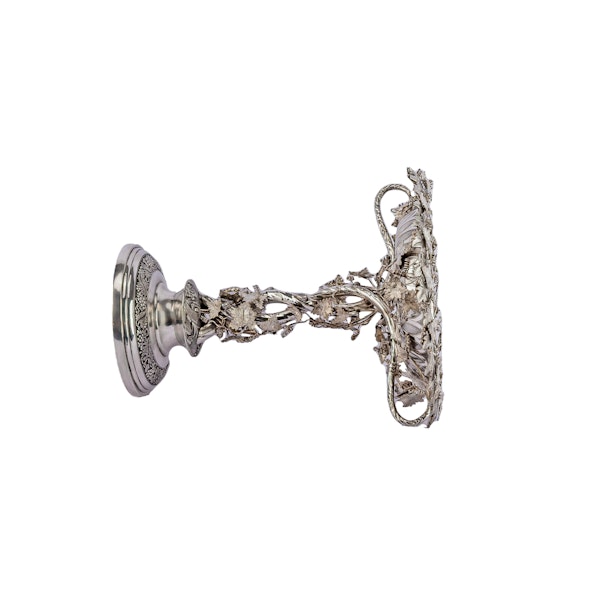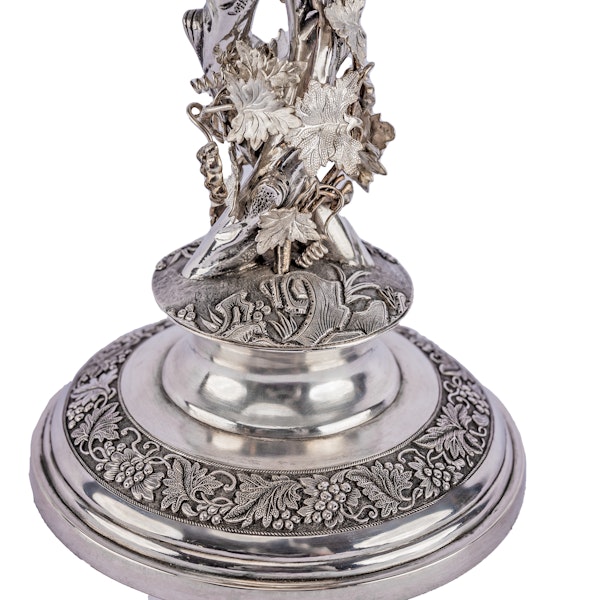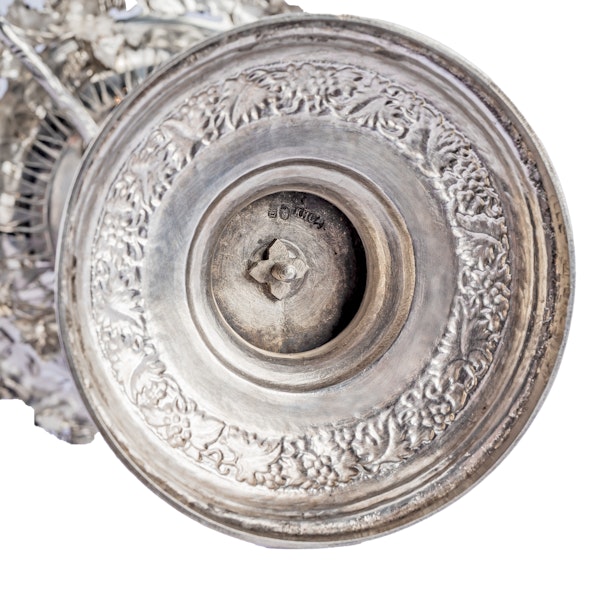Antique Chinese Silver Comport Centrepiece, KHC, Canton, China – 1840-50
Antique Chinese Silver Comport Centrepiece, KHC, Canton, China – 1840-50
POA
Description
Antique Chinese Silver Comport Centrepiece, KHC, Canton, China – 1840-50
This exceptional and theatrical Chinese silver comport, or dessert dish, would have been used to add drama and height to a sumptuous dining table in a grand and affluent establishment. To the underside of the base, the comport bears the stamp KHC together with pseudo hallmarks, which suggest that it was made prior to 1842, the date when most Chinese retailers are believed to have ceased using pseudo hallmarks to mark their products.
KHC was the stamp used by Khe Cheong of 2 Old China Street, Canton and Club Street, Honam Island, Canton. They traded from circa 1820 – 1890 and, unusually, were retailers of both gold and silverwares. KHC was one of the most important retailers of precious metals in Canton in the early 19th century. The firm had an excellent reputation for quality, excelling in monumental items, boxes and filigree. Clearly, it was a very high-end retailer which received many important commissions. It is not known whether it had its own workshops or commissioned items from external artisans and independent workshops.
The comport sits above a domed plain silver foot ornamented with a finely executed and detailed repousse and chased grape and vine leaf border, edged by narrow rope borders. To the underside of the foot, a Chinese silver four lobed nut can be seen, which is particular to Chinese silver. Similar nuts can be seen to the underside of the dish above, where they have been used to secure the dish to the supporting silver faux vine on which it rests.
Above the foot, a stout plain silver knop supports a mound, or hummock of silver, fashioned to represent the soil or earth. Out of the earth, a naturalistic grape vine emerges with two gnarled and twisting stems which interlock and rising upwards, form the supports and handles for the dish. The stems of the vine bear small bunches of grapes, delicate coiled tendrils, fashioned from silver wire and masses of vine leaves which have all been hand cut, chased and hammered to form as naturalistic and graceful representation as is possible.
The grape and vine motif was part of both Chinese and European art traditions. In China, it was favoured during the Tang Dynasty and in Europe, its roots emanated from the arts of the ancient Greek and Roman Empires. At the time the comport was made, eminent London silversmiths, such as Hunt and Roskell, were also producing luxury silver items festooned with grapes and vines, fashioned in a very similar way.
The circular dish is flat to the base with steeply sloping sides. It is surrounded by vine stems and leaves to the underside, with more elements applied to the edge of the flat rim. A rhythmic repousse and chased repeating geometric pattern of overlapping arches ornaments the side of the bowl, forming a contrast to the naturalistic elements.
This whimsical comport is an elegant and functional table accessory and a fine example of mid nineteenth century Chinese silverware.
| item details | |
|---|---|
| Origin | Chinese |
| Period | 19th Century |
| Style | Other |
| Condition | Excellent |
| Dimensions | Weight: 658 grams |
| Diameter | H:21.5cm W:21cm |
Product REF: 10016
